Dogs rarely snap without warning. The signs are there—written in body language, eyes, and tension you can feel in the air.
One minute they’re still, the next, they’re lunging. That shift? It’s not random. It’s a loaded signal, often ignored until it’s too late.
Whether it’s a rigid tail, a low growl, or the sudden stillness before a storm, dogs speak their intentions loud and clear—if you know how to listen.
This isn’t about fear. It’s about awareness. Learning these 13 behaviors could mean the difference between a calm encounter and a dangerous bite. Let’s decode what your dog is really saying before the teeth come out.
Raised Hackles
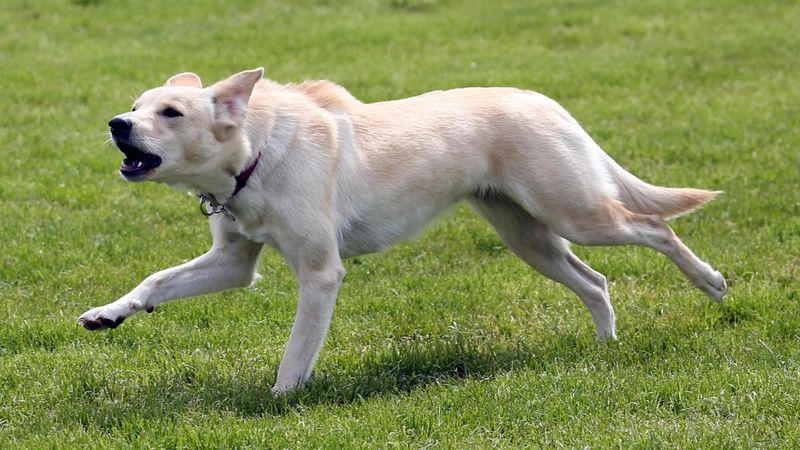
A dog’s hackles refer to the hairs on its back and neck. When a dog feels threatened or aggressive, these hairs stand up, known as piloerection. This automatic response can make the dog appear larger and more intimidating to potential threats. Raised hackles don’t always indicate aggression; sometimes, they show excitement or anxiety. However, when combined with other warning signs, it could mean the dog is preparing to attack. Observing the context and the dog’s overall body language is key. Always approach a dog with raised hackles cautiously.
Growling

Growling is one of the most direct ways a dog communicates discomfort or aggression. A growling dog is warning you to keep your distance. It is crucial to heed this warning instead of dismissing it. Growling can often precede a bite, making it important to back away slowly and avoid sudden movements. Sometimes, dogs growl during play, but the context is usually clear. Recognizing the difference between playful growling and aggressive growling can prevent misunderstandings. Respecting a growl shows respect for the dog’s boundaries.
Stiff Body Posture

A stiff body posture in dogs can be a precursor to aggression. When a dog stands rigidly, it may be on high alert and ready to defend itself. This posture often accompanies intense staring, where the dog focuses intently on a perceived threat. It’s a clear signal that the dog feels anxious or threatened. Moving away slowly and avoiding eye contact can de-escalate the situation. Dogs use body language extensively to communicate their feelings, and understanding these signals can prevent confrontations. Always approach a stiff dog cautiously.
Baring Teeth
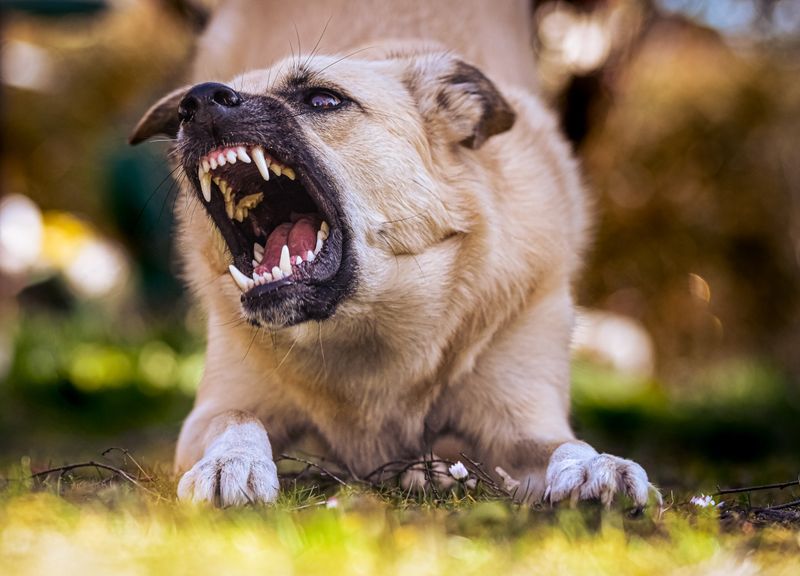
When a dog bares its teeth, it is often a warning sign of an impending attack. This gesture is a universal symbol of aggression among animals, signaling displeasure or fear. Paired with a low growl, this behavior can be particularly intimidating. Dogs use this as a last warning before they might bite. Recognizing this sign is crucial for avoiding an aggressive encounter. Maintaining a safe distance and not challenging the dog’s space is advisable. Remember, dogs communicate with their body and facial expressions as much as humans do with words.
Intense Staring

Intense, unwavering staring is a significant sign that a dog may be preparing to attack. Dogs use their eyes to communicate dominance or challenge. When a dog locks eyes with you, it might be assessing whether you’re a threat. Breaking eye contact and remaining calm can diffuse tension. Unlike friendly eye contact, this type of stare is devoid of playfulness. It’s essential to read the situation accurately and give the dog space. Understanding canine eye communication helps in predicting their behavior. Keeping a safe distance is always a prudent choice.
Snapping
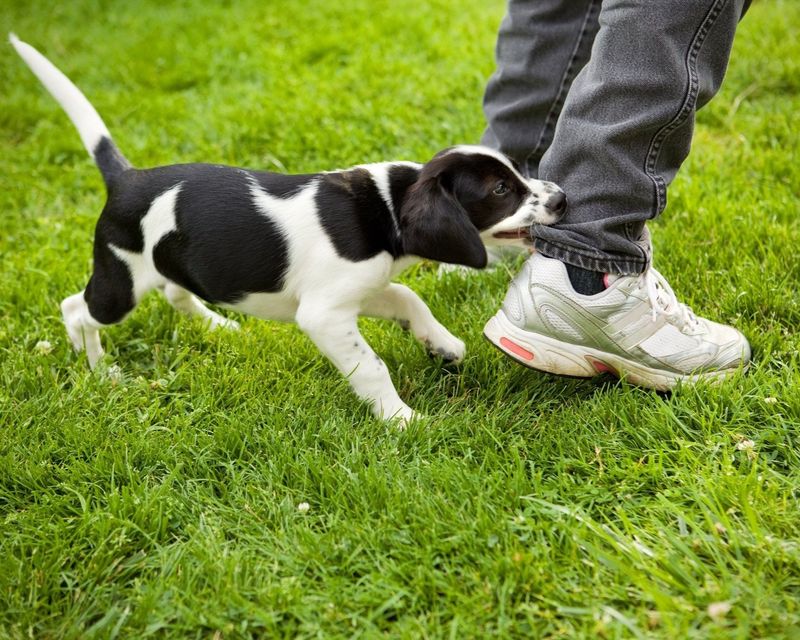
Snapping is an unmistakable indicator that a dog is reaching its limit. This quick, biting motion is often used as a warning before a full bite occurs. Dogs snap when they feel their personal space is encroached upon or when they’re startled. This behavior is common when a dog is cornered or feels trapped. Recognizing a snap for the warning it is can prevent more serious incidents. Avoiding sudden movements and giving the dog space can alleviate its stress. Properly reading this signal can save you from potential harm.
Ears Pinned Back

A dog’s ears can reveal much about its emotional state. When a dog’s ears are pinned back, it often signifies fear, anxiety, or aggression. This position is a defensive mechanism, preparing the dog for a potential threat. Coupled with other signs like growling or a stiff body, pinned-back ears can indicate the dog is uncomfortable and may attack if provoked. Observing ear position alongside other behavioral cues is vital. Understanding these signs can help in assessing a dog’s mood and prevent aggressive encounters.
Low Growl

A low growl is a subtle yet powerful signal that a dog may be agitated or ready to protect itself. Unlike a bark, which can have multiple meanings, a low growl is often a straightforward warning. It indicates that the dog is feeling threatened and could escalate to a more aggressive stance if not heeded. This sound is usually accompanied by other warning signs, such as bared teeth or a tense body. Respecting a low growl by maintaining a safe distance can help prevent conflict.
Tail Held High and Stiff

A high, stiff tail is a classic indicator of a dog in a heightened state of alertness. This posture often signals confidence or dominance and can precede aggressive behavior. When a dog holds its tail high and stiff, it’s asserting its presence and preparing for potential confrontation. Tail position, combined with other body language, can help interpret a dog’s mood. Understanding this sign in conjunction with other cues, like stiff posture or staring, provides a clearer picture of the dog’s intentions.
Lips Curled Back
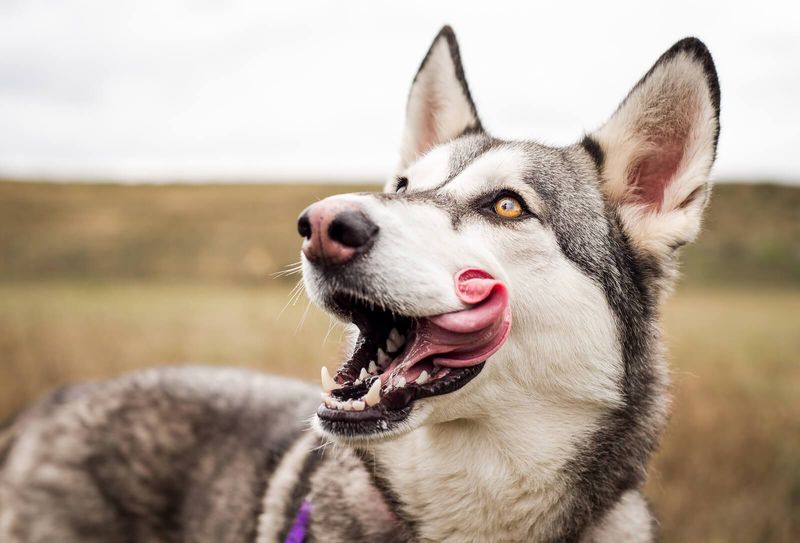
When a dog’s lips curl back, revealing its teeth, it’s signaling aggression or fear. This behavior is often accompanied by growling or barking and is a clear warning to stay away. Dogs use lip curling as an expression of discomfort or to assert authority. Recognizing this early warning sign can prevent escalation to a physical attack. It’s vital to read these signals in context with other behaviors and the environment. Giving the dog space and avoiding direct confrontation is advisable in such situations.
Deep Barking

A deep, resonating bark can be a sign of a dog readying to protect its territory or owner. This type of bark is different from a playful or alert bark in its intensity and depth. It communicates a warning, urging the perceived threat to back off. Understanding the context of the bark helps in assessing the dog’s intentions. This communication form, when combined with other signs like stiff posture or growling, indicates a heightened state of readiness. Always approach with caution when hearing such barks.
Raised Lips

Raised lips, showing teeth, are a clear signal of potential aggression in dogs. This facial expression indicates that the dog feels threatened and is prepared to defend itself if necessary. Observing this behavior along with other signals like growling or a stiff tail can help assess the situation’s severity. Dogs rely on facial cues to express emotions, and understanding these can prevent conflicts. Keeping a respectful distance when a dog exhibits this behavior is a prudent choice.
Escalating Vocalization
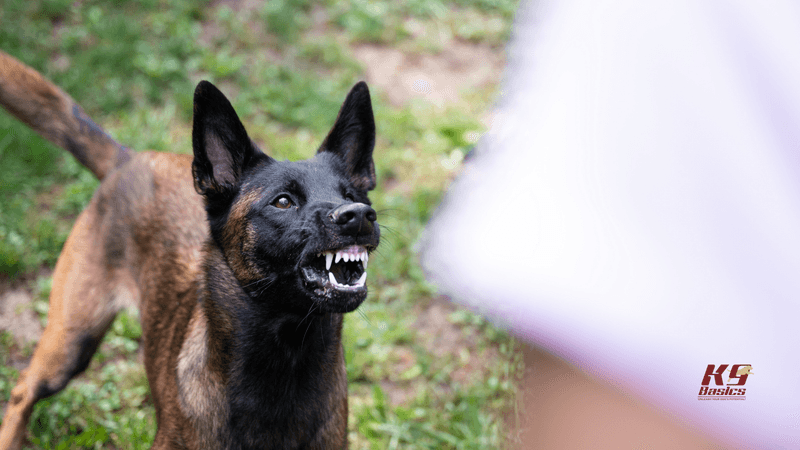
Escalating vocalizations, such as transitioning from barking to growling, indicate a dog’s increasing anxiety or aggression. This progression shows that the dog is moving from a warning phase to a more defensive stance. Recognizing this change can help prevent a potential attack by giving the dog space. Dogs communicate their discomfort through varied vocal tones, which can escalate if their signals are ignored. Understanding this progression assists in better interpreting canine behavior and ensuring safety.

